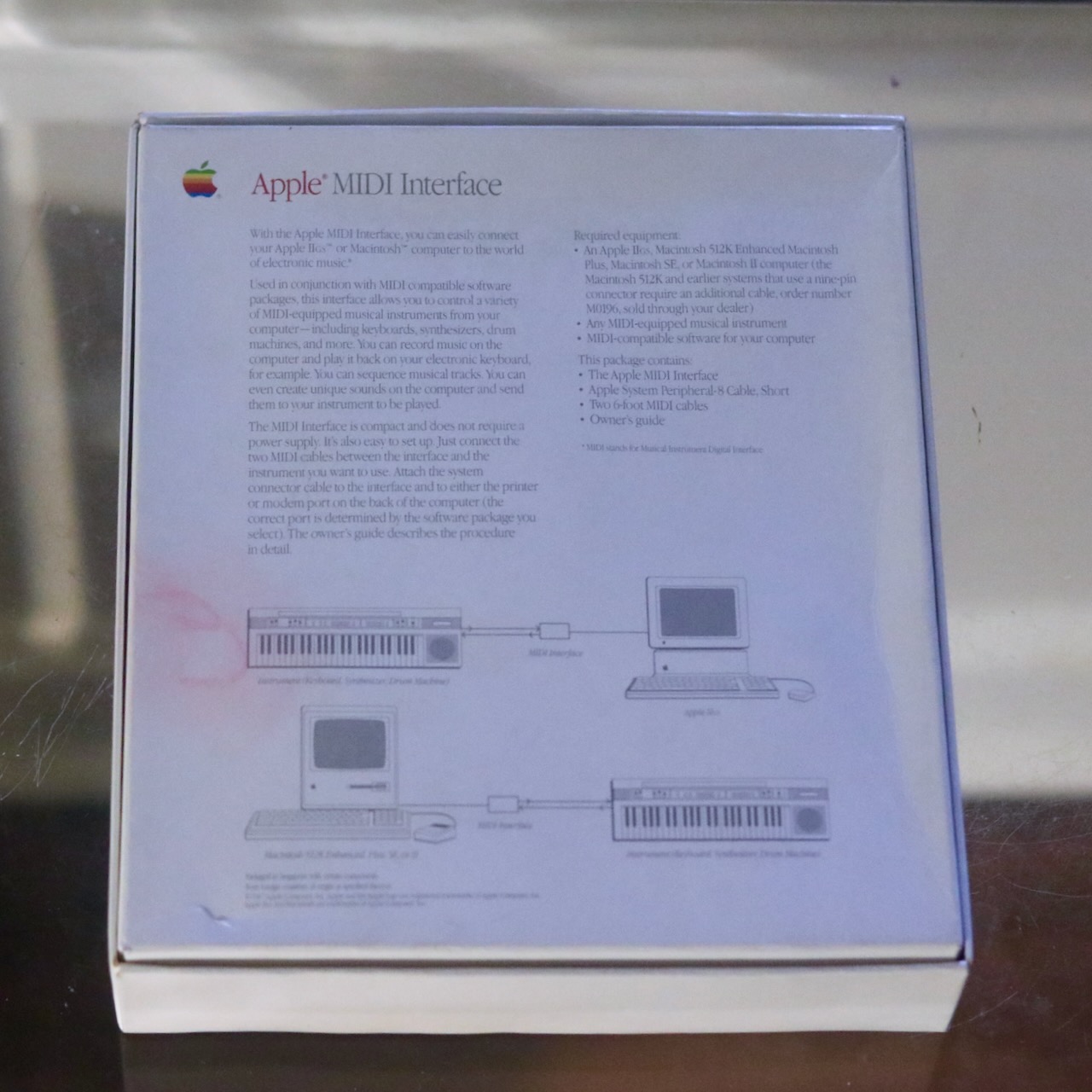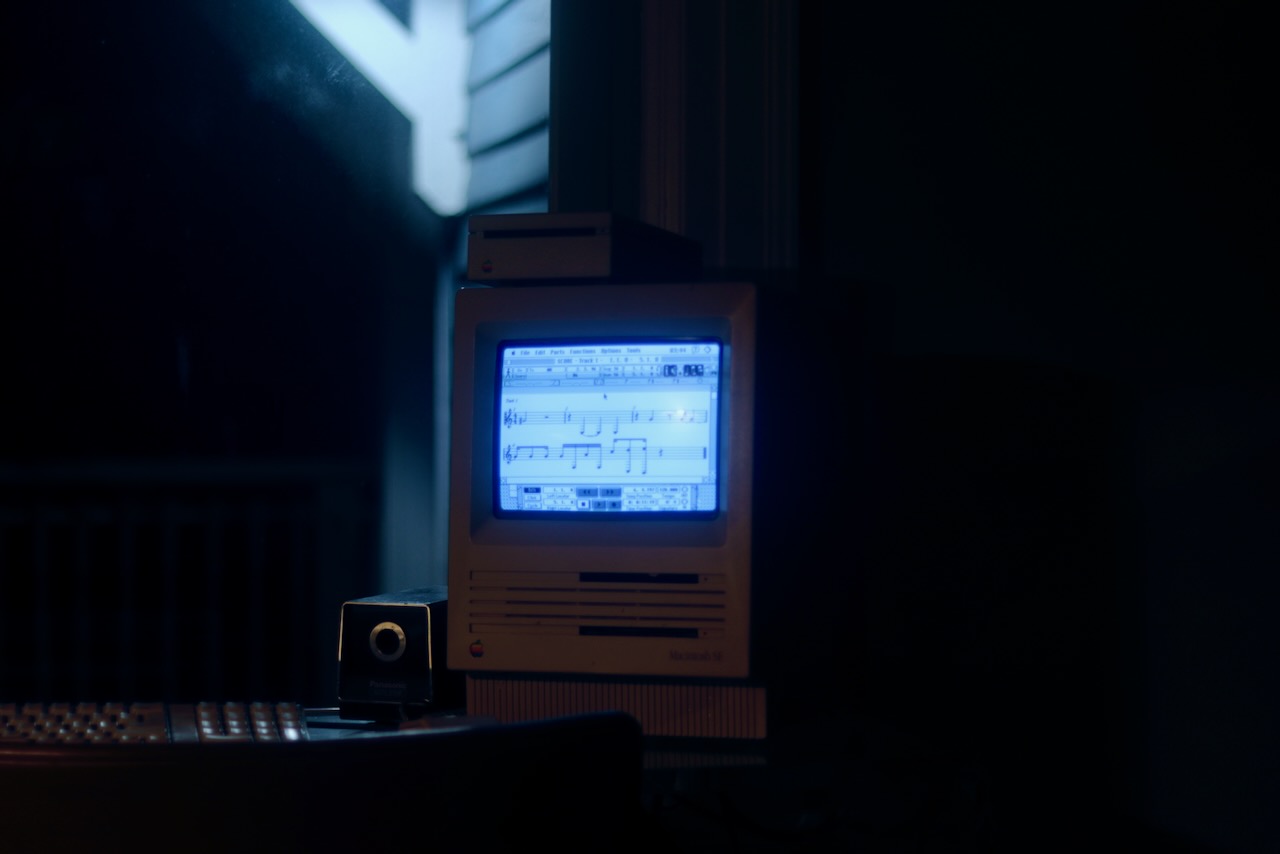A while back, I found an Ensoniq ESQ-11 at Goodwill. Like most synths, it has MIDI input/output on the back. Unlike many modern synths, it has no integrated speakers or headphone jack. Instead it sports full size tape input/output jacks and a stereo audio out jacks. Once I got it home, I bought some RCA adapters and plugged it into my Yamaha AVR which serves as a preamp for a Schiit Vidar driving a pair of Magnepan LRS and a Rythmik L12 subwoofer. It sounded incredible, and the presets on the cartridge it came with were a lot of fun. Unfortunately, I don't know how to play so that was as far as I got.
Last week I was surfing eBay and came across the Apple MIDI Interface, which connects either the 8-pin DIN printer or modem port on an Apple IIGS or Macintosh to MIDI input/output. I found one for a reasonable price and ordered it.

Connecting the Apple MIDI Interface is simple enough, just connect one end of the 8-pin DIN cable into the printer port and the other to the MIDI Interface. Then connect one MIDI cable to the input port on the MIDI Interface, and the other end to the output port on your instrument, and vice versa for the other cable.
Or as illstrated on the back of the box:

Next we need some music software for interfacing with MIDI. Older versions of Cubase2 run on System 7, but certain versions (e.g. 2.5) can't be copied off the disk without triggering the copy protection, and the README for Cubase LITE 1.0.2 warns that later versions will be distributed on high-density floppies which can't be used from 800k systems like my Macintosh SE.
If you have Basilisk II and AppleShare set up as outlined in this article, follow these directions:
- Download this copy of Cubase LITE 1.0.2.
- Modern macOS will handle unpacking
.hqxsimply by opening the file. Under that is a.sitfile which must be unpacked with StuffIt. - Copy the
.dsk.sitfile to the share folder of Basilisk II, start the emulator, then drag the file onto the StuffIt app to expand it. The expanded file is a.dsk(equivalent to.image). - Shut down the emulator. Open the Basilisk GUI and add a new disk, select the
.dskfile from the share folder. Start the emulator. - Drag the disk onto the share folder, this will copy the disk files into a folder.
- Copy the folder in the share from macOS to the mounted AppleShare share if your emulator share folder is not the same.
- On the Macintosh SE, open the same AppleShare share.
- Open the Cubase folder. Then open your boot disk, System Files, Fonts.
- Copy the Cubase font file into the Fonts folder.
- Copy the Cubase app onto the hard disk.
- Open the Cubase app!

Cubase starts with MIDI settings which will work with the modem port. You can change it to use the printer port if you like, but I'm using that for LocalTalk. To create a new recording, click the record button at the bottom. Cubase will start clicking, and you can play some notes on your instrument. Once you're finished, click stop. The track will display, click on it to see the notes it recorded like in the image above.
From this screen, we can print our masterpiece. Copying the font file into the system Fonts folder is required for this to work, as outlined in the documentation. My system printer is already configured to my HP LaserJet 4100 which advertises itself over AppleTalk, and I can print with the default settings. It takes a couple of minutes, but eventually the printer will start humming and out will come a beautifully typeset sheet of music.

At this point, you're likely unimpressed with my key smashing. Luckily, there are actual musicians that have documented their use of Cubase 1.0 on the Macintosh:
- Look Mum No Computer's video: Making Music on a Macintosh with Cubase 1.0
- Be The Aeroplane's video: Sequencing my studio from a Mac SE running Cubase
-
Wikipedia says:
↩︎Ensoniq ESQ-1 is a 61-key, velocity sensitive, eight-note polyphonic and multitimbral synthesizer released by Ensoniq in 1985. It was marketed as a "digital wave synthesizer" but was an early Music Workstation.
-
A 1990 article in Sound On Sound, Mac Attack!, discusses Cubase's arrival on the Macintosh platform and illustrates some of its features. ↩︎